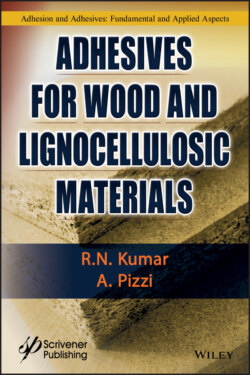Читать книгу Adhesives for Wood and Lignocellulosic Materials - R. N. Kumar - Страница 49
2.3.1.3 Dipole–Induced-Dipole Interaction
ОглавлениеIn the dipole–induced-dipole interaction, the presence of the partial charges of the polar molecule causes a polarization, or distortion, of the electron distribution of the other molecule. As a result of this distortion, the second molecule acquires regions of partial positive and negative charge, and thus it becomes polar. The partial charges so formed behave just like those of a permanently polar molecule and interact favorably with their counterparts in the polar molecule that originally induced them. Hence, the two molecules cohere with a potential energy V given by
where μ is the dipole moment of the polar molecule, α is the polarizability of non-polar molecule, and r is the distance between them.
